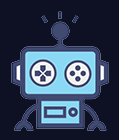Empowering Young Minds: How Game Design Fuels Literacy Growth
02/19/2025
Transforming Learning Through Play and Creativity
Addressing Literacy Challenges in Low-Income Communities
The Max Schoenfeld School, nestled in one of New York City's most economically challenged areas, faces a daunting task. Over 80% of its students come from Hispanic backgrounds, and nearly a third are English learners. Despite these challenges, The Max has embraced an unconventional method to bolster literacy among its young scholars. By integrating video game design into its curriculum, the school taps into students' inherent passion for gaming, turning it into a powerful educational tool.The school's afterschool program offers a unique blend of academic support and engaging activities. For 90 minutes, three times a week, students dive into various pursuits, including the creation of their own video games. Using platforms like Canva, they conceptualize characters, craft narratives, and even pitch their creations to a panel of parents and educators. This immersive experience teaches more than just game design; it instills critical literacy skills such as writing, speaking, and storytelling.A Curriculum Built on Collaboration and Expertise
The foundation of this innovative program lies in a carefully crafted curriculum developed by WorkEd, in partnership with literacy consultant Valerie Martinez. Martinez, known for her transformative work at Baird Middle School in Fresno, where she achieved remarkable success with English learners, brings invaluable expertise to the table. Her insights have shaped a curriculum that bridges the gap between gaming and literacy, ensuring students gain practical knowledge while honing their language abilities.Students learn about key concepts such as "genre" and "legend," which are not only crucial for game development but also enhance their academic vocabulary. Sentence frames provide structured opportunities for students to practice complex sentence structures, fostering both oral and written communication skills. For example, during a lesson on world-building, students were tasked with describing points of interest on their game maps using specific sentence patterns. This exercise not only deepened their understanding of map-making but also improved their ability to articulate ideas clearly.Innovative Learning Through Practical Application
Over the course of 10 weeks, students embark on a comprehensive journey through the game design process. From brainstorming initial concepts to developing detailed storyboards, they engage in hands-on activities that reinforce literacy skills. One student envisioned a game where players must rescue missing parents, while another created a space exploration adventure. Each project reflects the students' creativity and demonstrates how deeply they've internalized the lessons.A recent focus on world-building allowed students to create intricate maps for their games. They explored different perspectives, such as horizontal and bird’s-eye views, and learned the importance of a map legend. These activities provided multiple touchpoints for language practice, reinforcing vocabulary and encouraging thoughtful expression. For instance, students explained their map designs using sentence frames, articulating why certain elements were included. This method ensures that learning remains interactive and meaningful.Measuring Impact and Future Prospects
By embedding literacy instruction within the engaging context of game design, The Max aims to foster measurable growth in students' language skills. Recognizing the potential impact of this approach, the school has partnered with Project Tomorrow to evaluate the program's effectiveness. Initial feedback suggests that students are not only enjoying the activities but also demonstrating significant improvements in literacy.Moreover, this initiative opens doors to potential career paths in fields like game design, marketing, and technology. Students are exposed to real-world applications of the skills they're acquiring, preparing them for future opportunities. The Max's commitment to innovative education ensures that even the most economically disadvantaged children have a chance to thrive academically and professionally.Recommend News
Niantic's Potential Multi-Billion Dollar Deal with Scopely Signals Major Shift in Gaming Industry
02/19/2025
Unlocking Creative Potential: Leveraging Game Development Tools for Aspiring Developers
02/19/2025
Niantic's Potential $3.5 Billion Video Games Division Sale to Scopely
02/19/2025
Rediscovering Retro Gaming: A Journey Back to the Golden Age of Pixels
02/19/2025
Valve's New Move Offers Hope for TF2 Community
02/19/2025
Avowed: A Mixed Reception on Steam
02/19/2025
Mapping the Future: Niantic's AR Legacy and the $3.5 Billion Sale
02/19/2025

